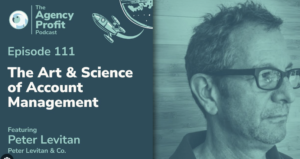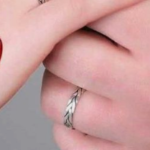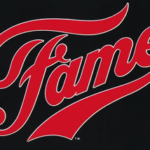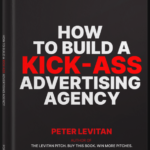To Tell the Truth — Even Better… How To Lie
_____________________________________________________________
The Set Up
What you are about to read is a mélange of life experiences. These include growing up in Manhattan, getting loaded in Puerto Vallarta, being an LSD expert, killing it on a TV show, a bit of HDHD, getting tossed out of college, finding “art,” and getting banned from LinkedIn.
Chapter 1
To tell you my very own truth, I’m a skilled liar. Not psychotic. Just good at factoid manipulation.
I can prove it. Stay tuned.
I grew up on the Upper West Side of Manhattan, across the street from Central Park. When people I meet ask me where I’m from… I say Manhattan. After a few minutes of conversation, they say, “Oh, yeah, I get it.”
I went to McBurney School, a private high school in New York City. It was small – we had 61 students in our senior class. We wore blue blazers with McBurney emblems, gray wool pants, and striped ties. The school was on 63rd Street, sandwiched between Central Park and Lincoln Center. We had what I’d call a classical education. Despite being a smart guy in a smart school, I was not remotely interested in most of my classes, especially math. I was one of those kids who did not meet their “potential”. Frankly, school bored me. But I hung in.
One sunny fall afternoon, I was going to hang out with my good friend Jeff. After classes, he showed up in the school lobby to tell me that he couldn’t do the hangout because our headmaster had asked him to join a couple of other boys, uber math and science lovers, to go down to the TV production company Goodson-Todman Productions. Goodson-Todman was the leading game show company and ran hugely popular TV shows like Family Feud, The Price Is Right, and Concentration. Their office was on a high floor in Park Avenue’s iconic ultra-modern Seagram’s Building.
My classmates were going to audition for two guest slots on the popular afternoon panel show To Tell the Truth. I tagged along… the plan was to run around the city after they finished their audition.
Just in case you are not a baby boomer, To Tell the Truth was a staple of daytime TV from 1956 to 1978. The show was a fun game show where celebrity panelists tried to figure out which of three contestants was telling the truth about having a weird job or crazy experience. The other two were impostors who got to lie through their teeth.
Back to me. Here we are, three blazer-clad high school boys in the Seagram building on Park Avenue, sitting in a very snazzy reception area. Within a few minutes, a young production assistant came out and welcomed us. She asked if we were the boys from McBurney. My buddies stood up, and the woman asked why I was sitting. I told her that I was there as a friend. She said, hey, why not get interviewed too – you are already here. My buddies looked at me with surprise. I’m like, why the hell not?
The assistant took me into a small conference room and started with questions to get to know me. I happily told her that I truly loved math and science (LOL), and I demonstrated that I could put sentences together. Plus, I was telegenic with a workable and effective blush.
It was then that I found out that we were being interviewed for a To Tell The Truth episode about LSD, a drug just then making the rounds of my generation. One of us was going to be one of two non-truth impostor boys sitting beside a Midwest teenager who had won the National Science Award for reporting the effects of LSD on spiders – a 1948 experiment he had recently updated.
I’m like, LSD and arachnids. That’s cool… fits neatly into the zeitgeist. This was 1968, hippies were all over the TV news, and I had read a bit about two newly famous Harvard professors who had experimented with LSD and were becoming 1960s cultural icons.
A day after the interview, our headmaster asked me to come to his office, a rare event, and asked what the heck I was doing at the production company because he was rather surprised to hear that I had been selected to be on the show. I just smiled and shrugged.
I had a couple of phone conversations with the production assistant and was given a date for the show and a bit more detail on the science project. Guess what! The spiders wove crazy webs under the influence of LSD. Who knew?
An LSD Education…
I had two compelling incentives to be a brilliant faker on To Tell the Truth. One was simply my competitive nature. Like, why couldn’t I look and sound the part of a science nerd? This would sort of be my first “business pitch”. Pitching was something I would eventually master and write business books about. The other incentive was the cash prize for being believed that I was the real LSD science nerd.
Back to EDU.
After being selected, I went to the Donnell Research Library on West 53rd Street to study all about psychedelics and especially Lysergic Acid Diethylamide. My acid gurus were Harvard’s Timothy Leary, who became well-known for his mantra, “Turn on, tune in, drop out”, and Richard Alpert. Richard eventually became the global Buddhist guru Baba Ram Dass, now famous for his mantra, “Be Here Now.” Leary and Alpert were moral evangelists, even entrepreneurs in the emerging field of psychedelics that captured the attention of the post-war cohort. They had been so good at their job that they were kicked out of Harvard. My goal was to become an expert like them. FYI: Dozens of years later, I got “Be Here Now” tattooed on my right arm to help tame my monkey mind.
The Show.
A couple of weeks later, I found myself in Studio 54, yes, that one, for the tapping of the show. I was one of three teens facing Tom Poston, Peggy Cass, Orson Bean, and Kitty Carlisle (famous people in 1968), plus the host, Bud Collier. The goal for the imposter boys was to stump the panel plus the audience, who also voted. Our maximum prize was $500, which would be shared.
What happened?
I won all the votes. Remember, I said that I was a good liar and shared the prize money with my confederates. I will be forever grateful to Tim Leary and Richard Alpert for my psychedelic education and TV renumeration.
Last point. I knew by the end of this experience that I’d have to try LSD sooner or later.
That might be enuf info for you. But, wait, wait, there’s more.
Chapter 2
Christmas In Puerto Vallarta
A couple of months after I was on To Tell the Truth, I was invited to go on a family trip to Puerto Vallarta, Mexico, for Christmas and New Year’s 1969 with my friend Jon and his parents. Jon was an only child, and my “job” was to be his buddy and playmate while the parents spaced out on the long beach.
Puerto Vallarta is now a major tourist destination; it had over six million tourist visits in 2024. People flood in from Mexico, the USA, Canada, and around the world via plane and cruise line. However, back in 1968, PV was still a quiet and virtually unknown beach town. Its fame accelerated after the director John Houston filmed 1964’s film “The Night of the Iguana” that starred Richard Burton and Ava Gardner. In 1964, Burton and his wife, Elizabeth Taylor, a mega-glamorous movie star couple, vacationed in Mexico and put PV on the map.
PV was still a very small town when Jon and I landed back in 1968. But, it had it all: a spectacular curved beach, fresh seafood, tacos, sun, small hotels, and a river cascading from the mountains. And… free-flowing drugstores. As it happens, it still does.
A day after we arrived, we met Chris Marvin, an L.A. surfer type also staying at the hotel. Chris was at the hotel with his famous father, Lee Marvin. Lee was a mega Hollywood actor who had won the 1965 Academy Award for Best Actor and went on to star in successful movies like “The Professionals” and “The Dirty Dozen”. Lee was a dude, and by extension, so was Chris. Chris was our age, but, man, he was from a different planet. Two New York Jews and Mr. West L.A. Let’s dial this up even more.
We all connected. Why not…? Teenagers with occupied parents on a quiet beach with nada to do.
My week with Chris and Jon was to have a dramatic effect on the next two years of my life.
Compared to “Hollywood Chris”, Jon and I were like New York yokels. While we were eating cheeseburgers at an East 86th Street coffee shop, Chris was well into the L.A. movie star child party scene.
Within minutes of meeting Chris, we bought some pot and rolling papers from the hotel’s bellboy. This was the biggest bag of pot I had ever seen – not that I had seen much. It did not take us long to char a hole in our room’s coffee table as we burned the stems and seeds in a red clay Mexican bowl. At that point in my life, my marijuana experience was limited to a couple of hits on a joint at my summer camp. And, humorously, weeks earlier, buying a bag of what was catnip, not pot, in Washington Square Park. Jon and I were like babes in the woods staring at a couple of ounces of what would eventually become one of the largest cash crops in the Western world.
The week progressed from getting stoned to being turned on to Black Beauties, which Chris bought us at the local drugstore. Black Beauties was the street name for biphetamine, an amphetamine with similar effects to today’s Adderall and Dexedrine. If you haven’t taken amphetamine, the effect is one of euphoria, clarity, confidence, and a wonderful sense of brilliance. Chris, Jon, and I became masters of the Puerto Vallarta universe. We laughed, swam in the ocean, and rode horses up into the hills. Plus, it was so early in the drug culture that Jon’s parents did not suspect that their two charges were rather high.
Need a vision? I was 17, stoned, drinking cervezas, talking a mile a minute, and downing grilled fish and shrimp tacos.
It was a brilliant end to 1968.
Chapter 3
Tacos + A Dream Woman + LSD
Just in case you are too young to study ancient history or have lost your youthful memory, 1968 and 1969 were brutal years. Martin Luther King and Bobby Kennedy were assassinated in 1968. 1968 was the middle of the Vietnam War. The January North Vietnam army’s 1969 Tet Offensive showed brain-dead Americans that the North Vietnamese had a deep desire, the power, and strategic skills to win the war. The scroll of dead and wounded U.S. soldiers and civilians was a daily staple on TV’s evening news. According to the Department of Defense, American and Vietnamese war-related deaths eventually totaled over 5,000,000. After Johnson abdicated, Nixon became President in January 1969, advanced the war, plowed into Cambodia and Laos, and our government announced the first U.S. draft lottery since World War II. We will come back to the draft lottery a bit later.
As one would expect, the vibes surrounding a high school senior who was recently introduced to fish tacos, Black Beauties, marijuana, Tim Leary and Richard Alpert, and let us not forget 15 minutes of TV stardom, and with a kinda ADHD mind, were, um, I am not even sure how to describe the feeling. Let’s just say that my focus, like many of my Baby Boomer cohort, was not concentrated on a traditional high school education.
Dreams. A Quick Digression.
When I described my high school and our wardrobe, I did not mention that it was an all-boys school. At 17, with my raging hormones, a high school location in New York near the American Ballet School with daily ballerina sightings, and my family’s apartment one block from the fashion epicenter of Fifth Avenue and Fifty-Seventh Street. I was overpowered by the sense that I was missing out on something. Something really big. Ah, yes, girls.
I was president of the senior class. This position offered little benefit until the day I realized that I could choose which other high school I could attend for the annual private school exchange day. A day when I could visit… TA DA, a school with girls. On the given day, I was bused up to the Bronx’s Riverdale Country School. I had one key objective = meet girls. I met my objective within minutes when I spotted the most beautiful blonde that I had ever seen. Think Joni Mitchell or Michele Phillips or Twiggy, or Jean Shrimpton – my 1969 dream woman fantasy parade.
My goal for the day was set = meet that girl. I was psyched but also consumed with fear. I finally had my chance when I saw her get on one of the school buses heading back to Manhattan. Somehow, I braved up. I got on that bus and sat next to her. In addition to being a “shiksa goddess”, Lisa was worldly, talkative, and, well, you get it. I got off at her stop on Riverside Drive, a mile from mine, and convinced her to see me again.
I’ll keep the story simple. I fell in love (first time beyond dreaming of Joni) and was taken into her wonderful family. Her father had been the New York Times’ Middle East correspondent. Lisa grew up in Beirut. I was introduced to hummus, baklava, and dinner parties with UN diplomats. And, yes, of course, more.
I’ll save you from the details.
I finally took my first LSD trip in June 1969. Without having done much preplanning, my friend Larry and I decided it’d be a good idea to head into psychedelia at a The Who concert, the introduction of their Tommy, at New York’s Fillmore East. Since I was now one of the leading experts on the science of LSD, one might have thought that I would carefully choose the “set and setting” of my first trip. Nope. Here is a great definition of set and setting from The American Trip: Set, Setting, and Psychedelics in 20th Century Psychology”, by Ido Hartogsohn.
THE SET-AND-SETTING HYPOTHESIS
“It is difficult to think of many other concepts which are as fundamental and widely accepted in the study of psychedelics as “set-and-setting.” The concept, which was first proposed by Timothy Leary and his group at Harvard, claimed that the character of a psychedelic experience is determined first and foremost by the user’s character, expectations and intentions (Set), as well as by the social and physical surrounding in which the drug experience takes place (Setting). Leary went as far as to claim that 99% percent of the specific response to LSD is determined by set-and-setting.”
My set: I was ready to finally take my first trip + I knew my expectations + I was of sound mind and body. I was about to graduate from high school, had gotten into Boston University, my boys and I had tickets to Woodstock, and I was in love with Lisa and baklava.
My setting: One could imagine that a disciple of Tim Leary would choose a quiet spot in the country or even nearby Central Park for his first trip. Nope, Larry and I decided to use our sixth-row center Fillmore East seats to go see The Who, the world’s loudest rock band with the manic Keith Moon on drums. Great music. On the visual side, the show included the high art of The Joshua Light Show, a world-class rock ‘n roll perfecto manic light show with floating red magic buses.
I’ll leave the combined effects of LSD and The Who plus Joshua up to your imagination. After the show, Larry and I wound up sitting on East 6th Street for an hour in a concerted effort to come back to earth. But, but, things did not stop there. A bit later, we found ourselves at a party in a large apartment in the Majestic apartment building on 72nd Street and Central Park West. To help set the stage, I had lived in this iconic thirty-story twin-tower building when I was younger. The building was across the street from The Dakota, where John Lennon was living when he was shot.
The party’s host had been, no surprise, left alone by his out-of-town parents. I found myself in a bedroom smoking pot with strangers, coming down from my trip, and being introduced to the music of the San Francisco psychedelic band Quicksilver Messenger Service. A band 100% designed for my special headspace that night. Crazy universe: I’d eventually meet Quicksilver a couple of years later when I lived in San Francisco.
College Twas Not For Me.
Do I have attention deficit hyperactivity disorder? I’ve thought from time to time that I might suffer from ADHD. However, upon a somewhat educated examination of the facts, I have determined that saying yes would be self-diagnosis, as in an uneducated excuse for my “monkey mind” and often manic curiosity. It can also be a major dis for the people who do suffer from this psychological affliction.
In fact, I find the use and misunderstanding of the term ADHD somewhat appalling. Allow me to go down this rabbit hole. First, a definition from the National Institute of Mental Health.
“Attention-deficit/hyperactivity disorder (ADHD) is a disorder marked by an ongoing pattern of inattention and/or hyperactivity-impulsivity that interferes with functioning or development.”
This subject is important for me for a bunch of reasons. I’ll start with me.
Me & My Brain.
I’ve mentioned that I was not a very good student. I did not enjoy sitting in a classroom; I did not want to do homework; I did not care at all about many core subjects. The stuff just bored the shit out of me.
However, I am smart, rather intelligent, curious, and have a strong sense of humor. Oh, I am also a good conversationalist. My teachers knew that when I was interested in a subject, I became animated (my favorite in high school class was comparative religion). When I dug into a subject, I dove in. Remember my being selected to be on To Tell the Truth, learning everything about acid, and winning via educated lying?
At best, I was a B student. To be honest, probably all totaled up, I was a C student. It did not look that good for my getting into Harvard.
My SAT testing scores also sucked. As I mentioned, I never enjoyed sitting in a classroom in the first place. So, going to a central testing facility to sit in a room with dozens of other seniors to pencil in answers was not in my nature. My situation was intensified, as the room was filled with young women. Yikes! For me, this was like being in a candy store after not eating for a week. It was so crazy that I remember laughing out loud at this total mind + teen-body + visual 18-year-old distraction.
Hey, y’all, I was just a healthy teenager.
A quick side story about study habits and poor grades, and, yes, lying. Ira Solomon was our exceptionally geeky math teacher. He had the 1960s geek look down, way pre our tech-nerd definition, and was the type of guy who wore a black suit, white shirt, black eyeglasses, and a plain tie. He was slavish to his fountain pen. No BIC for Ira. Very particular. He knew I was not a math student, especially when we got to calculus. When it came time for me to take the mid-year final, the one that would seriously affect my GPA and appear on my college application, he took pity, and, good news, Ira needed his Vietnam teacher deferment. He told me that if I sat in the back of the test room, did not fiddle, and looked like I was taking the test, he would give me a C+. I did. He did.
I got into Boston University’s eccentrically named College of General Studies. It was a smaller college within the huge Boston University that was specifically designed for people like me with a wandering brain.
I am not sure how the program was defined back in 1969. This is how BU sells it today.
“A small liberal-arts college in a world-class urban university. You’ll forge a unique path through BU, exploring a wide range of disciplines while applying broad learning to real-world problems. And you’ll fulfill almost all your BU Hub general education credits along the way.”
This all sounded like the right place at the right time. I could reinvent myself at BU. I could leverage this unique, modern, focused liberal-arts school within a huge university to align my wandering brain with a higher education. Did this happen? Insert laugh here… Nope.
I’ll get past the details quickly. I lived in a large dorm building facing the football field and made friends with the pot-smoking crowd. I was still on my Summer of Love high and did not go to lots of classes. I was much more interested in girls (are you seeing a pattern?) than in geology. The school’s student advisor department called me in a few times to tell me that I was bright, but they did not understand why I did not apply myself to my studies and rarely showed up for classes. An old story.
Somehow, I made it through my freshman year. In my sophomore year, I moved into a nearby apartment with buddies (that was crazy) and had to go to summer classes to try to make up for my endemic absenteeism.
Summer 1970 was all about friendships, trips to Fenway to see the Red Socks, seeing Jimi Hendrix, and being stoned. I was also rekindling my interest in photography that had started very slowly in high school. I started to walk around Boston and New York City with my 35 MM Pentax.
I did not know it until 40 years later, but the curious guy that I used to see wandering around my 57th Street neighborhood taking photographs with his Leica was the now uber famous (think Museum of Modern Art) and brilliant street photographer, Gary Winograd. I did not connect the dots then, but I sure do now. I am now thinking that I experienced some form of silent creative osmosis.
Around the middle of my sophomore year, the administration had finally had enough and told me that I would not be invited back to BU in the following fall. I took it in stride, but my mother totally freaked out. Um, why? Well, of course, no parent wants to see their kid flunk out of college. But wait, wait, there’s more.
Good morning, Vietnam.
During the summer of 1970, I scored well in the Vietnam draft lottery. My number was 23 out of 365. That meant if I lost my college deferment, I would be immediately drafted. What did a non-student who was uninterested in going to college do? I was at a major life-stage turning point.
Carole saved me. Carole was one of my few friends who knew of my passion for photography. She turned me on to the San Francisco Art Institute. The best and coolest art college in the coolest city. I sent away for the brochure and was wowed.
For my mother, the thought that her son could get into a school, a school that would satisfy the college deferment requirement, in a subject he finally showed some interest in, was like gold. Of course, it was not as easy as that. I did have to go into mommy sales overload, but I did get her to send me out to San Francisco to study the fine art of photography.
Whoa — I moved out to San Francisco, to California, to study art in 1970 when S.F. was at the center of the youth-oriented and super groovy universe. You could not have invented anything as cool as that.
End Game.
So, how did it all pan out? Bottom line, I started to get my shit together C/O art and Barbara, my first long-term girlfriend, and way gifted artist.
Since then, life’s been a great ride. The ride?
I launched a professional photography studio in S.F. I shot photographs for print ads and covers for San Francisco Magazine, including Hall of Famer Reggie Jackson and Mayor Moscone.
Did I want to be a professional photographer? To figure this out, I moved back to NYC, assisted world-famous photographers (Richard Avedon, anyone) to see if I wanted to really go commercial, and quickly said NAH.
The next stage: I launched a global advertising career at New York’s largest agency, which morphed into the world’s largest advertising agency.
Started and CEO’d two Internet-based companies in the 1990s. One invented online news, and the other “invented” chatbots.
Moved to Bend, Oregon, with Mary Lee and the two kids and bought my own advertising agency.
I now consult with global advertising agencies.
My ethnographic photography has taken me around the world.
I get to live in San Miguel de Allende, Mexico.
Um… Oh, I am still a really good liar.
Chapter 4
A 2025 Business Lie.
I’ve worked with and advised advertising executives and agencies for many years. A key element of my industry consultation has been helping leaders craft and manage their personal brand. The perception of you, what Tom Peters called YOU, INC. in 1997, is one element of a well-managed, successful career.
Many people work on massaging their brand & persona. Personal facts and histories can become a bit fuzzy. In many cases, this fact flubbing (I am being kind here) goes unnoticed. Why? Most people do not have the time to vet someone else’s life history and resume. We’d all like to believe what we read. Plus, who, other than future employers, has the time to fact-check?
Because I am a marketer at heart, I ran a personal truth test. I tested the idea of how fuzzy I could get. I added the prestigious Yale University Master of Fine Arts in photography, MFA, to my LinkedIn profile. Have any of the thousands of people who have viewed my LinkedIn business profile ever referenced my advanced Yale degree? Nope. Possibly a PHD from Harvard might have gotten more attention.
My Latest CEO Fib Test.
In early 2025, for testing purposes, I added a new fake job to my LinkedIn profile. I thought, let’s go big: I chose the job title – CEO of LinkedIn. I wanted to see if people in my network would quickly figure out that this was total bullshit. I wanted to see if lying about something as big as being the new LinkedIn CEO was easy – or not.
Obvious bullshit, right? However, thousands of my followers and newsletter subscribers, and even those algorithm-generated mystery people, saw the post. I got lots of Likes and congratulatory DMs from my contacts. Like a lot! People believed what they read.
In addition to peer group adulation, I got a “you are about to be banned” email notice from LinkedIn management. Not surprising.
Between laughing and, more importantly, knowing that I needed my LinkedIn account for my business, I immediately removed any mention of my brand–new CEO job from my profile.
LinkedIn’s thought police noticed that I had removed the title and assured me that everything was fine. Having been an early LinkedIn adopter. I joined up in 2004, might have helped my cause as well.
Could I have lied more subtly and gotten away with it?
Hmmm…. What would have happened if I had just said that I was the new CEO of WhatsApp?
Are you a LinkedIn or any other social media 100% truth teller? Here’s a related personal branding factoid:
“A study by StandOutCV (2023) found that 34% of LinkedIn users admit to embellishing details on their profiles.”
Ah, praise the lord, I am not alone.
I will keep you posted about any future lies.
###############





